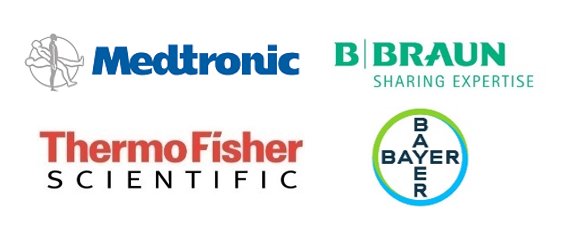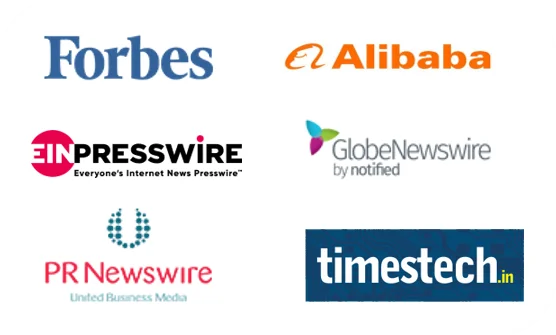Market Overview:
"The global oligonucleotide active pharmaceutical ingredient (API) market was valued at US$ 3.1 billion in 2024 and is expected to register a CAGR of 10.6% over the forecast period and reach US$ 7.7 billion in 2033."
|
Report Attributes |
Details |
|
Base Year |
2024 |
|
Forecast Years |
2025-2033 |
|
Historical Years |
2021-2024 |
|
Oligonucleotide Active Pharmaceutical Ingredient (API) Market Growth Rate (2025-2033) |
10.6% |
Oligonucleotide Active Pharmaceutical Ingredient (API) serves as the core genetic material that regulates cellular functions. It is vital for precision medicine, gene therapy, and molecular diagnostics. It is widely used in treatments for genetic disorders, cancer, and viral diseases, as it has ability to target specific genes. Increasing focus on personalized medicine, advancements in gene therapies, and rising Research and Development (R&D) investments are driving demand for oligonucleotide APIs.
The global oligonucleotide API market is registering steady revenue growth due to the increasing adoption of gene therapies, precision medicine, and molecular diagnostics. This growth is attributed to rising healthcare awareness, expanding applications of genetic technologies, and supportive regulatory frameworks. With advancements in biotechnology, increased investments in research, and collaborative efforts among pharmaceutical companies, further driving market revenue growth.
Oligonucleotide Active Pharmaceutical Ingredient (API) Market Trends and Drivers:
Rising Demand for Precision Medicine: Oligonucleotide APIs play a crucial role in precision medicine by enabling targeted therapies based on patient’s genetic profile, leading to more effective treatments and reduced side effects.
Advancements in Gene Therapies: Revenue growth of the market is driven by increasing use of oligonucleotide APIs in cutting-edge gene therapies, which hold promising potential for treating genetic disorders, rare diseases, and certain types of cancer.
Growing Application in Molecular Diagnostics: Oligonucleotide APIs are integral to molecular diagnostic tools, facilitating accurate detection of genetic mutations and variations, thus aiding in early disease diagnosis and management.
Supportive Regulatory Environment: Regulatory agencies are increasingly providing streamlined pathways for the approval of oligonucleotide-based therapies, boosting research and development efforts and driving market revenue growth.
Collaborative Research and Partnerships: Pharmaceutical companies, biotech firms, and research institutions are collaborating to advance the development of innovative oligonucleotide therapies, driving market expansion through shared expertise and resources.
Oligonucleotide Active Pharmaceutical Ingredient (API) Market Restraining Factors:
High Development Costs: The complex nature of oligonucleotide-based therapies requires extensive research and development, leading to high costs, which could limit market revenue growth.
Regulatory Challenges: Oligonucleotide APIs are subject to rigorous regulatory scrutiny due to innovative nature, which could result in delays or obstacles in gaining regulatory approvals.
Delivery Challenges: Effective delivery of oligonucleotide APIs to target cells poses technical challenges, impacting therapeutic efficacy and potentially limiting adoption and market revenue growth.
Limited Manufacturing Scalability: Production of oligonucleotide APIs can be challenging to scale up, which could affect availability and affordability for broader patient pool.
Safety Concerns: Potential for off-target effects or immune responses could raise safety concerns, requiring thorough evaluation and potentially impacting clinical acceptance.
Oligonucleotide Active Pharmaceutical Ingredient (API) Market Opportunities:
Personalized Medicine: Oligonucleotide APIs enable targeted therapies tailored to individual genetic profiles, offering personalized treatment approaches with enhanced efficacy.
Rare Diseases: Oligonucleotide-based therapies show potential in addressing rare and genetic diseases for which traditional treatments are limited.
Collaborative Research: Collaborations between pharmaceutical companies, research institutions, and technology firms can drive innovation and accelerate the development of oligonucleotide APIs.
Growing Investment: Increased investment in research and development of oligonucleotide therapies reflects growing interest and potential for revenue generation.
Emerging Markets: Expanding healthcare access in emerging markets presents opportunities for the adoption of novel therapies, including oligonucleotide APIs.
Partnerships and Licensing: Licensing agreements, partnerships, and acquisitions within the industry can provide additional revenue sources.
Technological Advancements: Advancements in drug delivery systems and nucleotide synthesis technologies can enhance the efficacy and delivery of oligonucleotide APIs.
Patent Expirations: As patents expire for conventional drugs, pharmaceutical companies can focus on developing oligonucleotide-based alternatives to maintain market share.
Diverse Applications: Oligonucleotide APIs have potential applications in diagnostics, therapeutics, and research, offering a versatile range of revenue streams.
Regulatory Support: Favorable regulatory frameworks and expedited approval pathways for innovative therapies can facilitate market entry and revenue generation.
Oligonucleotide Active Pharmaceutical Ingredient (API) Market Segmentation:
By Type:
- DNA Oligonucleotides
- RNA Oligonucleotides
By Application:
- Antisense Oligonucleotides
- Aptamers
- SiRNA
- miRNA
By End-Use:
- Pharmaceutical Companies
- Biotechnology Companies
- Contract Research Organizations (CROs)
Oligonucleotide Active Pharmaceutical Ingredient (API) Market, By Region:
North America:
- United States
- Canada
Asia Pacific:
- China
- India
- Japan
- Australia & New Zealand
- Association of Southeast Asian Nations (ASEAN)
- Rest of Asia Pacific
Europe:
- Germany
- The U.K.
- France
- Spain
- Italy
- Russia
- Poland
- BENELUX (Belgium, the Netherlands, Luxembourg)
- NORDIC (Norway, Sweden, Finland, Denmark)
- Rest of Europe
Latin America:
- Brazil
- Mexico
- Argentina
- Rest of Latin America
The Middle East & Africa:
- Saudi Arabia
- United Arab Emirates
- South Africa
- Egypt
- Israel
- Rest of MEA (Middle East & Africa)
The US is the largest market in North America due to its advanced pharmaceutical industry, well-established research facilities, and strong regulatory framework. Increasing emphasis on innovation, coupled with significant investments in healthcare and biotechnology in the country are driving revenue growth of the oligonucleotide API market in the region.
In Europe, key trends driving Oligonucleotide API sales include growing research and development activities in the pharmaceutical sector, increased focus on precision medicine, and rising demand for targeted therapies. Stringent regulatory standards and collaborations between pharmaceutical companies and research institutions also contribute to revenue growth of the market in this region.
Investment in China and India is pivotal for revenue growth of Asia Pacific Oligonucleotide API market due to robust pharmaceutical manufacturing capabilities, skilled workforce, and cost-effective production. These countries offer competitive advantages in terms of production scale, regulatory support, and research capabilities, attracting global pharmaceutical companies to establish a strong presence and revenue growth of the market in this region.
Several Latin America countries are poised for growth of oligonucleotide API manufacturers. Among these, Brazil, Mexico, and Argentina account for major market shares due to growing pharmaceutical industry, improving regulatory environments, and growing focus on research and development. These countries offer a favorable combination of skilled labor, infrastructure, and investment incentives, attracting both domestic and international pharmaceutical manufacturers to establish a significant presence and drive revenue growth of the Oligonucleotide API market in the region.
The Middle East & Africa is registering a gradual increase in demand for Oligonucleotide API, primarily driven by a rising prevalence of chronic diseases, developing healthcare infrastructure, and growing pharmaceutical manufacturing capabilities. Government focus on improving healthcare access and attracting foreign investment further contributes to market expansion potential. However, revenue growth of the market could be influenced by factors such as regulatory challenges and infrastructure development.
Leading Companies in Oligonucleotide Active Pharmaceutical Ingredient (API) Market & Competitive Landscape:
The global oligonucleotide Active Pharmaceutical Ingredient (API) market exhibits a competitive landscape characterized by various key players operating on a global scale. Major companies are leveraging their research capabilities, production capacities, and strategic collaborations to maintain market position. The market competitiveness is driven by factors such as innovation in API development, regulatory compliance, and partnerships with pharmaceutical manufacturers. As demand for precision medicine and targeted therapies rises, competition among these players is expected to intensify, driving advancements in oligonucleotide API research and production.
Company List:
- Thermo Fisher Scientific Inc.
- Merck KGaA
- Lonza Group AG
- LGC Limited
- Eurofins Scientific
- Biosearch Technologies, Inc.
- Integrated DNA Technologies, Inc.
- Amgen Inc.
- Gilead Sciences, Inc.
- Regulus Therapeutics Inc.
- Exiqon A/S
- BioNTech SE
- Sarepta Therapeutics, Inc.
- Bioneer Corporation
- Quark Pharmaceuticals, Inc.
Research Scope
|
Report Metric |
Report Details |
|
Oligonucleotide Active Pharmaceutical Ingredient (API) Market size available for the years |
2021-2033 |
|
Base Year |
2024 |
|
Forecast Period |
2025-2033 |
|
Compound Annual Growth Rate (CAGR) |
10.6% |
|
Segment covered |
By Type, Application, End-Use, and Region |
|
Regions Covered |
North America: The U.S. & Canada Europe: Germany, The U.K., France, Spain, Italy, Russia, Poland, BENELUX, NORDIC, & Rest of Europe Asia Pacific: China, India, Japan, Australia & New Zealand, ASEAN, & Rest of Asia Pacific Latin America: Brazil, Mexico, Argentina, & Rest of Latin America The Middle East & Africa: Saudi Arabia, United Arab Emirates, South Africa, Egypt, Israel, and Rest of MEA |
|
Fastest Growing Country in Europe |
Germany |
|
Largest Market |
North America |
|
Key Players |
Thermo Fisher Scientific Inc., Merck KGaA, Lonza Group AG, LGC Limited, Eurofins Scientific, Biosearch Technologies, Inc., Integrated DNA Technologies, Inc., Amgen Inc., Gilead Sciences, Inc., Regulus Therapeutics Inc., Exiqon A/S, BioNTech SE, Sarepta Therapeutics, Inc., Bioneer Corporation, Quark Pharmaceuticals, Inc., and among others. |
Frequently Asked Question
What are the key factors driving revenue growth of the global oligonucleotide Active Pharmaceutical Ingredient (API) market?
Key factors driving market revenue growth include increasing R&D activities in biotechnology and pharmaceutical sectors, rising demand for targeted therapies, growing prevalence of genetic disorders, and expanding applications of oligonucleotide APIs in personalized medicine.
Which regions/countries register significantly high demand in the global oligonucleotide Active Pharmaceutical Ingredient (API) market?
Regions such as North America and Europe exhibit significantly high demand due to advanced healthcare infrastructure and research activities. Asia Pacific is also emerging as a key market, driven by presence of contract research organizations and growing pharmaceutical manufacturing in countries such as China and India.
What are the key challenges faced by companies in the global oligonucleotide Active Pharmaceutical Ingredient (API) market?
Some key challenges include high production costs, stringent regulatory requirements, complex synthesis processes, limited availability of skilled professionals, and potential concerns related to off-target effects in therapeutic applications.
What are the emerging trends observed in the global oligonucleotide Active Pharmaceutical Ingredient (API) market?
Emerging trends include adoption of AI and machine learning for drug design, increasing focus on precision medicine, advancements in nucleic acid delivery technologies, and exploration of new therapeutic applications beyond genetic disorders.
How are government initiatives supporting revenue growth of the global oligonucleotide Active Pharmaceutical Ingredient (API) market?
Governments are investing in research and development in life sciences, offering incentives for drug innovation, and streamlining regulatory pathways for oligonucleotide-based therapies. These initiatives aim to accelerate drug development and commercialization, thereby supporting revenue growth of the oligonucleotide API market.

